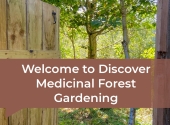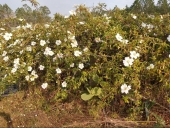Think I forgot to mention the species! Here are the trees and shrubs covered in my latest book
Trees and Shrubs That Heal.
The MEDICINAL TREES AND SHRUBS INCLUDED
Alder, Alder buckthorn, Arborvitae, Ash, Aspen, Barberry, Bayberry, Bearberry, Beech, Bilberry, Black chokeberry, Black mulberry, Black walnut, Blackcurrant, Bramble, Butcher’s broom, Butterfly bush, Chaste tree, China tea, Cider gum, Cornelian cherry, Crab apple, Cramp bark, Dog rose, Douglas fir, Elder, Fig, Forsythia, Foxglove tree, Fringe tree, Ginkgo, Glossy privet, Goji, Hardy rubber tree, Hawthorn, Hazel, Hibiscus, Horse chestnut, Italian cypress, Jujube, Juneberry, Juniper, Lavender, Lily magnolia, Manuka, Myrtle, Oak, Olive, Oregon grape, Pagoda tree, Partridge berry, Prickly ash, Quince, Raspberry, Red root, Rosemary, Rowan, Scots pine, Sea buckthorn, Siberian ginseng, Silk tree, Silver birch, Silver fir, Small-leaved lime, Spicebush, Spindle, Sweet almond, Sweet bay, Sweet chestnut, Sweet gum, Tree paeony, Trifoliate orange, Virginian witch hazel, White willow, Wild cherry, Wild hydrangea, Winter savoury, Winter sweet, Winter’s bark, Wintergreen
I used a lot of clinical references to support the material in the book although there was not room to include them. But you can obtain the 500 reference list (not exactly bedtime reading and 40 pages long) free online as a download from the Medicinal Forest Garden Trust website here
Trees And Shrubs That Heal references.













